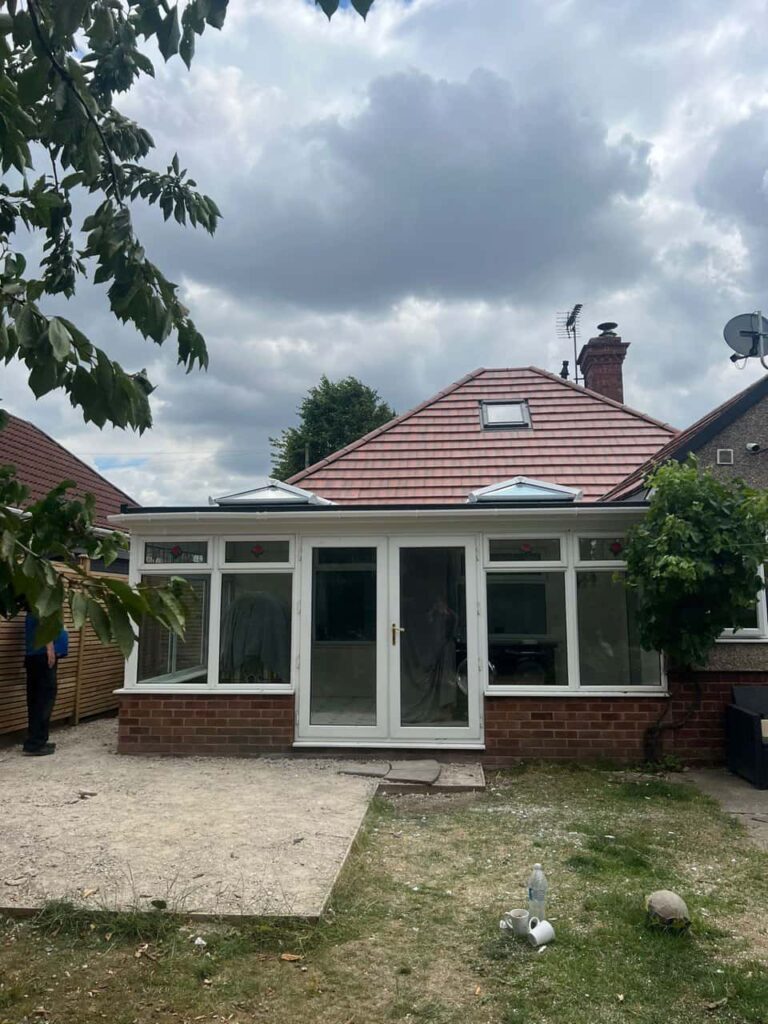Introduction
A damaged roof can put your home at risk of leaks, structural issues, and costly repairs. When signs of wear and tear appear, homeowners often face the dilemma of choosing between roof replacement or patchwork repairs. While minor damage may only require small fixes, severe problems may call for a full replacement to prevent recurring issues.
At LS Roofing Chesham, we provide professional roofing services in Chesham, Buckinghamshire, helping homeowners make informed decisions about their roofing needs. In this guide, we explain the key factors to consider when deciding between repairs and replacement.
Key Takeaways
- Minor damage, such as a few missing tiles or minor leaks, can often be repaired.
- Extensive damage, structural issues, or an ageing roof may require replacement.
- Frequent repairs may become more costly than a full roof replacement over time.
- Material lifespan and energy efficiency play a role in determining the best option.
- Professional assessment ensures the safest and most cost-effective solution.
When Is a Roof Repair Sufficient?
Roof repairs are ideal when the damage is localised and does not compromise the overall integrity of the roof. Common situations where patchwork repairs may be suitable include:
1. Missing or Broken Tiles
A few missing or cracked tiles can easily be replaced without affecting the entire structure. However, if the damage is widespread, it may indicate underlying roof deterioration.
2. Small Leaks or Water Stains
Leaks caused by damaged flashing, loose tiles, or minor gaps can often be patched up. If the source of the leak is identified early, repairs can prevent further water damage.
3. Isolated Flashing Damage
Flashing around chimneys, vents, and skylights can wear out over time. If the damage is restricted to a small section, replacing or resealing the flashing may resolve the issue.
4. Localised Weather Damage
Strong winds or heavy rain may cause minor roof damage in specific areas. In such cases, a targeted repair can restore the roof’s function without requiring a full replacement.
When to Consider Roof Replacement
If a roof has significant damage, is nearing the end of its lifespan, or has recurring issues, replacement is often the better option. Here are key signs that indicate a new roof may be necessary:
1. Ageing Roof
Every roofing material has an expected lifespan. If a roof is near the end of its lifespan, ongoing repairs may not be cost-effective. Approximate lifespans include:
- Asphalt shingles: 15–25 years
- Slate tiles: 50+ years
- Metal roofing: 40–70 years
If a roof is beyond its expected lifespan, replacement is the best long-term solution.
2. Recurring Leaks and Water Damage
Frequent leaks indicate a deeper structural issue. If leaks reappear after multiple repairs, the roof’s underlayment may be compromised, requiring a full replacement.
3. Widespread Tile or Shingle Damage
If more than 30% of tiles or shingles are cracked, missing, or curling, replacement is often more practical than continuous repairs. Widespread damage weakens the entire roof, making patchwork solutions ineffective.
4. Structural Weakness and Sagging
A sagging roof is a serious warning sign of underlying structural failure. This could be caused by:
- Water damage weakening roof supports
- Rotten or compromised timber beams
- Excessive weight from layers of old roofing materials
In such cases, roof replacement is necessary to restore safety and stability.
Cost Comparison: Repair vs. Replacement
While repairs may seem cheaper in the short term, repeated patchwork repairs can add up. Consider the following:
- A one-time repair may cost a few hundred pounds.
- Frequent repairs over several years can exceed the cost of a full replacement.
- A new roof improves energy efficiency, reducing heating and cooling costs.
Investing in a new, durable roof can be more cost-effective in the long run.
Benefits of Roof Replacement
If a roof is showing signs of extensive wear, a full replacement offers several benefits:
- Enhanced durability – A new roof provides decades of protection.
- Improved energy efficiency – Modern materials improve insulation, lowering energy bills.
- Increased property value – A well-maintained roof enhances kerb appeal.
- Fewer ongoing repairs – Avoids the inconvenience and costs of frequent patchwork.
How to Decide: Repair or Replace?
If unsure whether to repair or replace a roof, consider the following:
- Extent of damage – Localised damage can be repaired, while widespread damage requires replacement.
- Age of the roof – If near the end of its lifespan, replacement is often the better choice.
- Frequency of issues – Repeated leaks or broken tiles may indicate deeper structural problems.
- Budget considerations – While repairs are cheaper short term, replacement provides better value over time.
At LS Roofing Chesham, we provide professional roof inspections in Chesham, Buckinghamshire, helping homeowners determine the best solution for their roofing needs.
Conclusion
Deciding between roof replacement and patchwork repairs depends on the extent of damage, roof age, and long-term cost considerations. While minor issues can often be fixed with targeted repairs, extensive damage or an ageing roof may require full replacement to ensure long-term durability and protection.
At LS Roofing Chesham, we offer expert roofing services in Chesham, Buckinghamshire. Contact us today for a thorough roof inspection and professional advice on whether a repair or replacement is the right choice for your home.
Call us on: 01494 302 493
Click here to find out more about LS Roofing Chesham
Click here to complete our contact form and see how we can help with your roofing needs.

